
- Permbajtja
- prev
- next
- prev
- next
HIGHLIGHT: DORTE MANDRUP
Dorte Mandrup-Poulsen (born 28 July 1961) is a Danish architect. Founder and Creative Director of the architectural practice Dorte Mandrup Arkitekter that has approximately 60 employees. The practice is based in Copenhagen, Denmark and is behind several internationally acclaimed buildings.
Dorte Mandrup’s work is characterized by being conceptually strong as well as innovative in terms of form and material, but also by an analytical approach to architecture.
Dorte Mandrup is behind the Wadden Sea Centre at the Danish West Coast, the Icefjord Centre by the UNESCO trail in Ilulissat in Greenland, and most recently Danish clothing company Bestseller’s upcoming mixed use development in Brande, which has already received attention due to its plans of building a more than 200 metre tall tower, thereby becoming Denmark’s tallest building.
In 2017, Dorte Mandrup caused an international stir with her opinion piece ”I am not a female architect. I am an architect” in Dezeen, in which she discussed gender politics within the world of architecture.
She was also winner of the Berlin Art Prize 2019, architecture division.
Mandrup serves on the board of the Louisiana Museum of Modern Art and is a member of the Historic Buildings Council.
Biography
Dorte Mandrup graduated from the Aarhus School of Architecture in 1991. From 1991–92 she studied sculpture and ceramics at the G.S.C Art Department in the United States. She then went to work for Henning Larsen Architects for a few years before, in 1995, co-founding Fuglsang & Mandrup-Poulsen with Niels Fuglsang. This firm was eventually split in 1999 when Mandrup set up her current practice, Dorte Mandrup A/S. It was founded on 30 June 1999 and is based in Copenhagen.
In April 2019, Dorte Mandrup headed the jury of the 2019 European Union Prize for Contemporary Architecture – Mies van der Rohe Award.
On 1 November 2019, Mandrup won a competition arranged by The Whale AS for designing an attraction to be built on the Norwegian island of Andøya, 300 km north of the Arctic Circle. Her design resembles a whale but also presents a slope which visitors will be able to climb for a view over the sea, the mountains and the Northern Lights.
Awards
- 2003 Dreyer Honorary Award
- 2007 Nykredit Architecture Prize
- 2014 WAN Education Award ('Built' category) for Ama'r Children's Culture House
- 2015 WAN Mixed-Use Award for Sundbyøster Hall
- 2016 Träpriset for Råå Day Care Center
- 2016 Gröna Lansen - 2015, IKEA Hubhult Global Meeting Centre, Sweden
- 2016 WAN Metal in Architecture Award 2016, Salling Tower
- 2016 Honorary Award, Danish National Bank Jubilee Fund, awarded in recognition of the recipient's contribution and works
- 2017 Green Good Design Award, The Chicago Athenaeum, the world's leading sustainable design awards
- 2017 The Art, Design and Architecture Award of the Year, Dir. Einar Hansen and wife Vera Hansen Foundation
- 2017 ”Byggeri” – Magazine, Building of the Year, Wadden Sea Centre
- 2017 City of Esbjerg’s City-Fund Award 2017, Wadden Sea Centre
- 2017 Breeam Building of the year of Sweden Green Building Awards 2017, IKEA Hubhult Global Meeting Centre, Sweden
- 2019 Berlin Art Prize of architecture division
Most distinguished projects
-The Whale, Norway
The landscape surrounding The Whale is essential for the shape of the building. The form of the roof is defined by three high points on the site, and the foundation is influenced by the landscape beneath it. The surface of the roof is covered with natural, unworked stones from the area, and large windows opening towards the archipelago underline the connection between landscape and building.
The curved roof becomes a new viewpoint that visitors and locals are invited to walk on. From here you can overlook the archipelago, marvel at the midnight sun’s reflection in the ocean or the northern lights dancing over the sky.
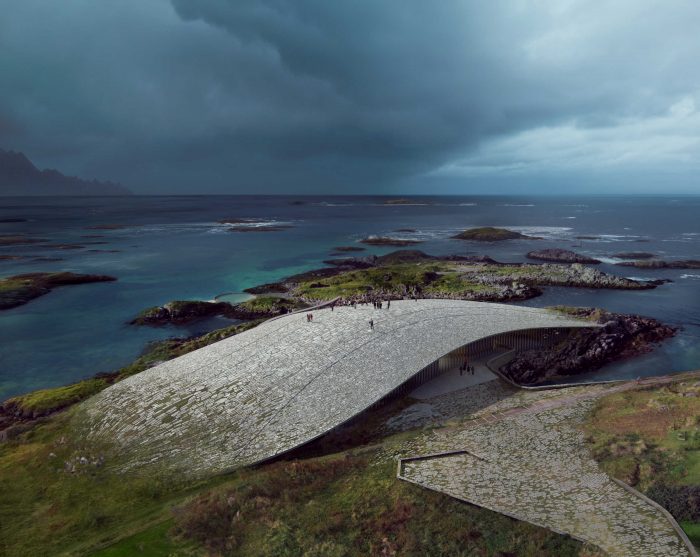
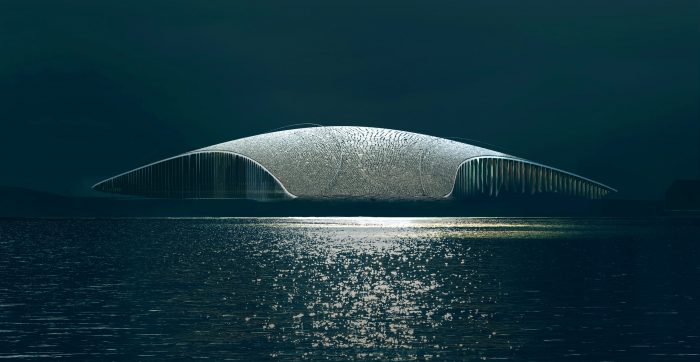
-Ilulissat Iceford Centre, Greenland
Between the mountain ridges of the Icefjord flows the world's fastest glaciers; Sermeq Kujalleq. At the glacier's front, giant icebergs are breaking into a roaring drama. On their way out through the fjord, they tip up to thousands of meters of icebergs. The unique natural scenario of mountains, sea, and the dramatic travel of the icebergs from ice cap to sea has given the Icefjord status as inalienable world heritage. For 250 years, scientists have been following the glacier Sermeq Kujalleq, where global warming is most evident. Here, the Greenlandic inland ice drains into the oceans with increasing speed every year. With the Icefjord Centre opening in spring 2021 the story of ice will be told to local, tourists and researchers from all over the globe.

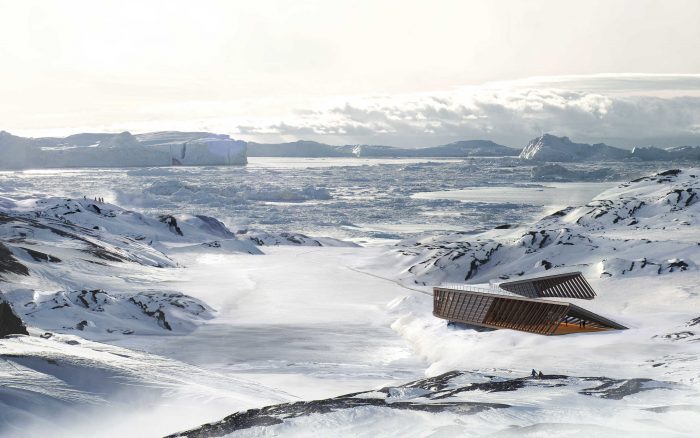
-La Brea Tar Pits, US
Our proposed extension to the Page Museum builds on the existing characteristics making this an iconic place. To preserve the use and the memory attached to the site while at the same time creating new ones, we propose to keep the simple and clear rectangular footprint with the geometric halo floating above the landscape and interpret the frieze that tells the narrative of the Pleistocene in a new façade made of small solar pixels.
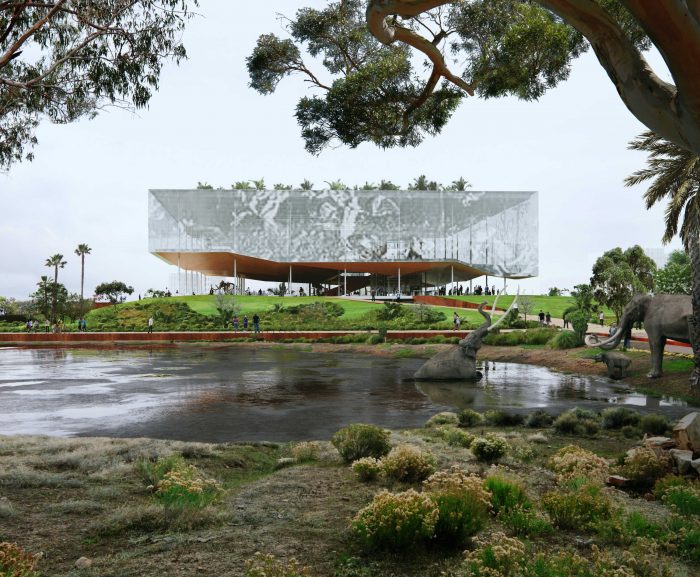
-Babyn Yar Holocaust Memorial Centre, Ukraine
As an abstraction of this historical ravine, our concept is centered around a gash – a new ravine – created in the earth. When descending into the ravine the sound of the city and the noise of the nearby streets is slowly reduced, creating a quiet and contemplative space. At the end of the ravine, the visitor gets a slight glimpse of the space opening. Flaking layers of slabs are edging a large open space, where the ravine floor is covered with water. From here the visitor continues to the exhibition space.
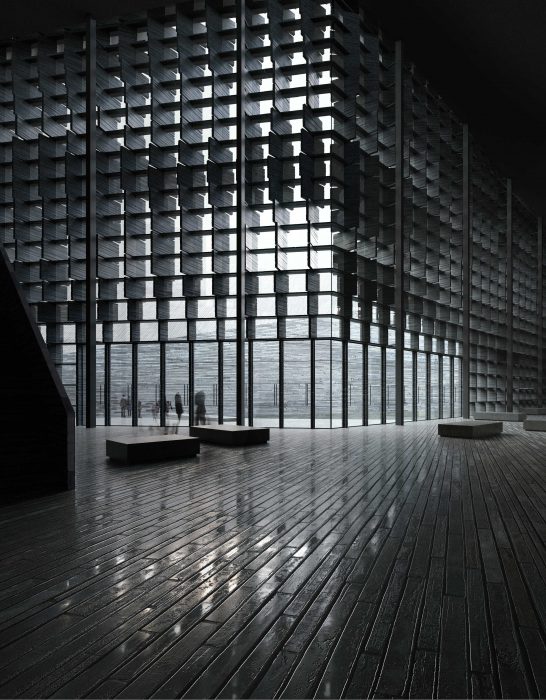
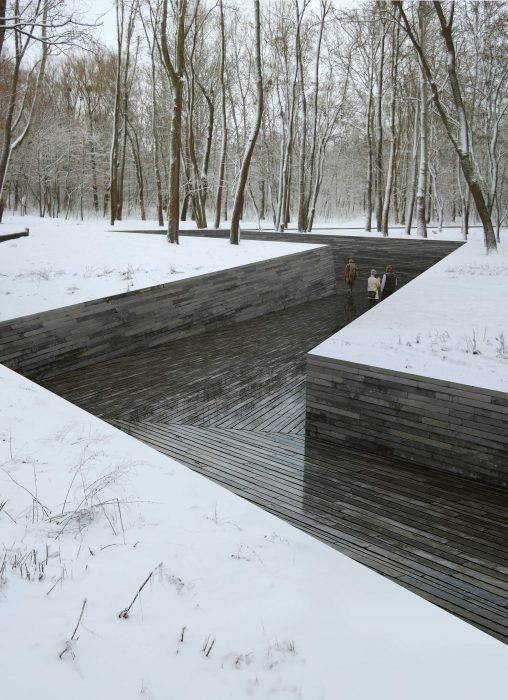
-Conditions, Venice Biennale Exhibition
Extreme cold, wind, snow and ice are normal features of daily life in the Arctic. If not prepared, existence is harsh. These extremes are what we are faced with when working on the upcoming Icefjord Centre in Greenland. When invited for the Biennale Architettura 2018 in Venice we wanted to convey these extreme CONDITIONS rather than the project itself. Not with facts but with an immersive, artistic interpretation of the Artic conditions surrounding the Icefjord Center and characterizing this unique place. These are the conditions under which we work, they define and inform buildings, and remind us of the great power of nature.
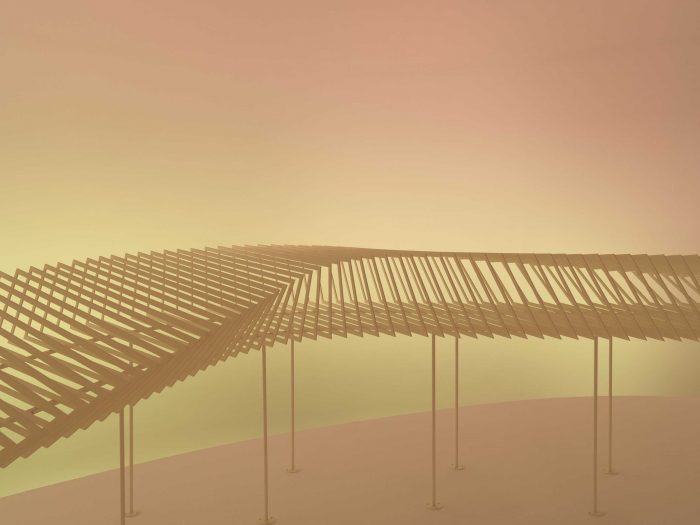
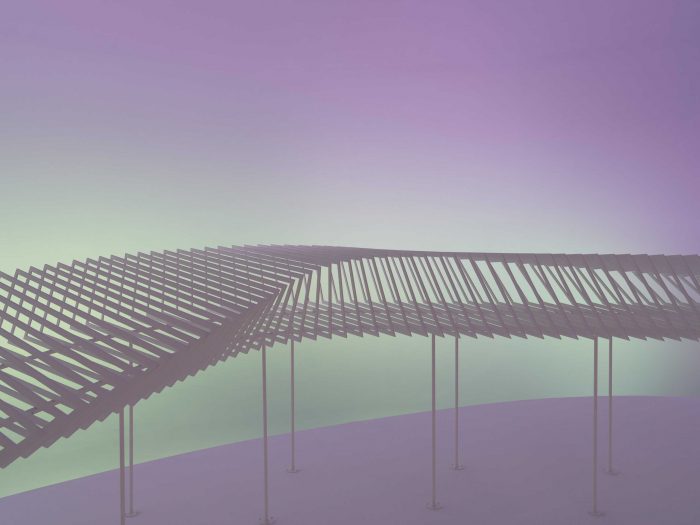
-Salling Tower, Denmark
The white steel tower stands out and acts as a point of reference and meeting spot in this new part of the city. The structure is made of welded steel plates, produced in a shipyard and sailed to the site in one single piece.
The tower creates an unexpected route from the quayside to the actual viewing platform 7.5 meters above. The visitor is lead below the expressive cantilevered body of the tower to a podium hovering above the reflective water of the harbor. The upwards movement then continues via a spacious staircase fitted for seating - offering a magnificent panoramic view of the harbor and the bay. The journey culminates with a spacious and sheltered viewing platform.
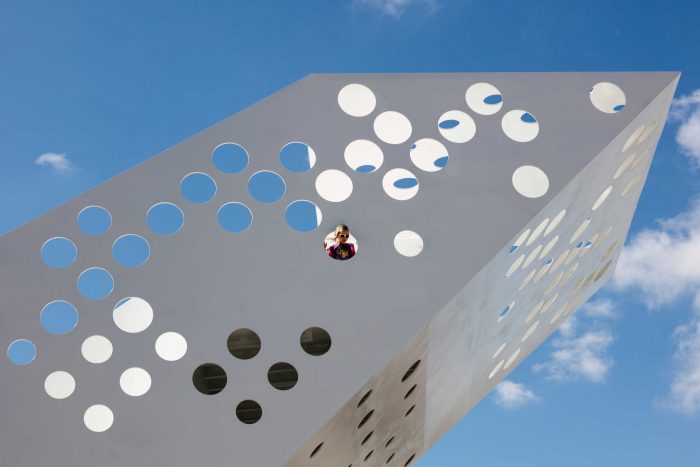
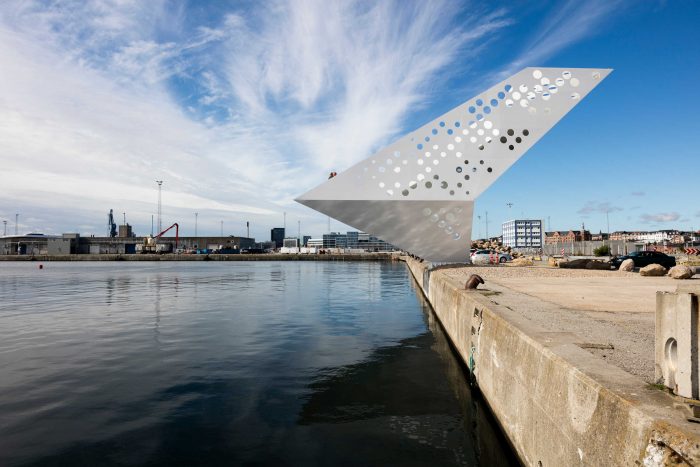
-Skanderbarggade Day Care Centre, Denmark
The building’s design is restricted by planning and regulations as well as by the desire for maximum consistency between the outdoor areas on the terrain and on the roof. Slope inclination allows play on the sloping surface up toward the actual playground. The layout also optimally utilizes solar orientation on the site.
Two other courtyards are cut into the roof, ensuring air and daylight to all levels, offering varied outdoor spaces for different activities.
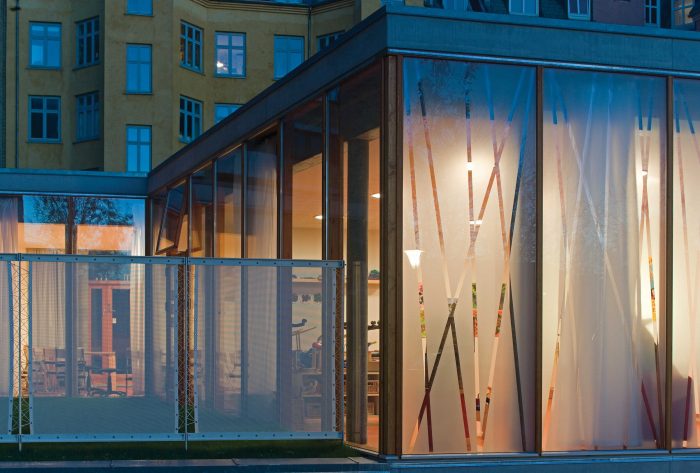
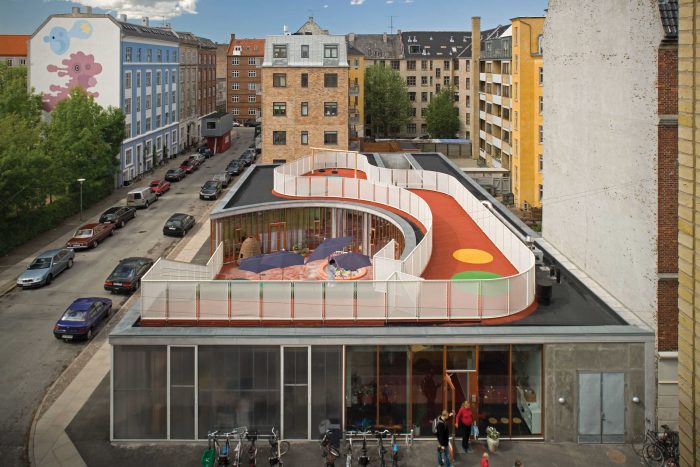
-The Aquarium, Denmark
The day care centre is located in a green oasis in a densely populated district. The site is narrow and rather long in a proportion of 1:3. The southern side of the site, next to Næstvedgade, is characterized by old preservation-worthy lime trees. In the summertime, the trees provide shade to half of the site. Therefore, in order to achieve appropriate utilization of the land in regards to sunlight, the building is placed along the eastern side of the site.
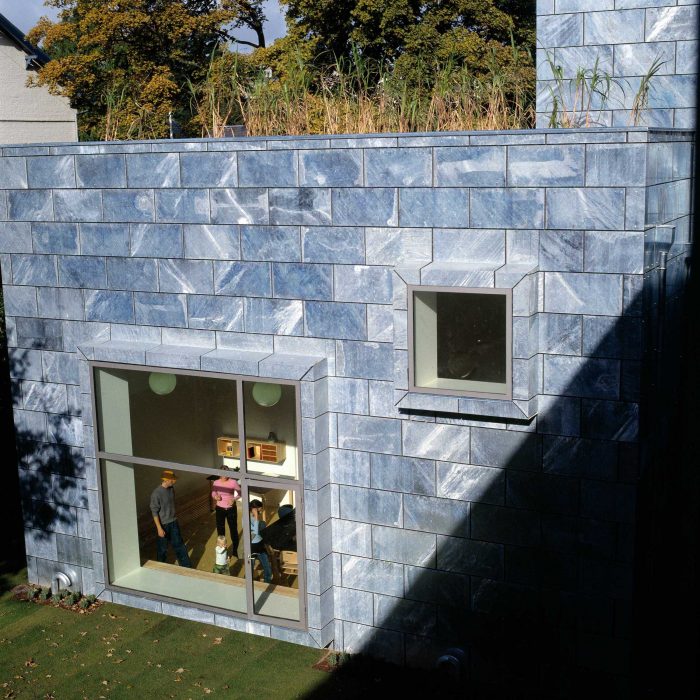
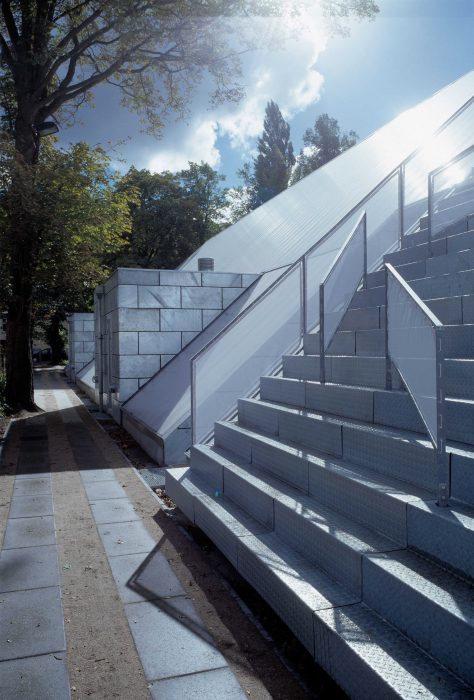
-Raa Preschool, Sweeden
The preschool is built on the borderland between the beach and the old fishing town of Råå, directly connected to the local school.
The building is shaped as an interpretation of the condensed village structure, immersed in a dune. The characteristic volume of the building dominates the interior experience with interesting shapes and views of the sea and the surroundings. The applied typology is challenged and used to create the best light incidence for the children at all times of year.

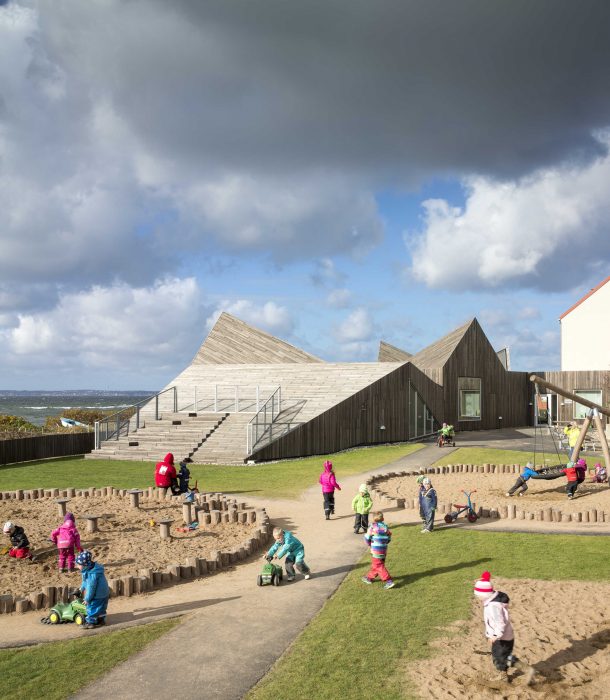
Refered to: www.dortemandrup.dk